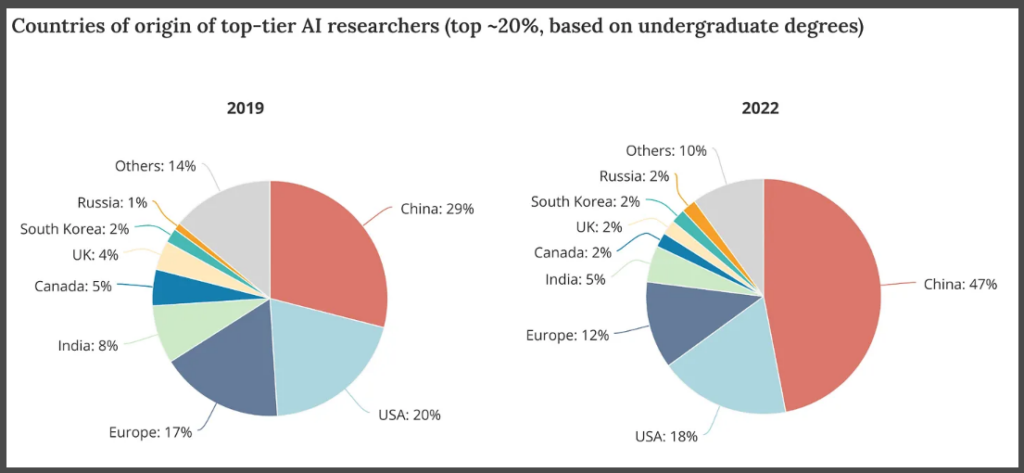
China Produces Nearly Half of World’s Top AI Researchers Who Increasingly Choose to Stay Home
In the rapidly evolving world of artificial intelligence (AI), China has emerged as a dominant force, with its AI talent pool expanding significantly in recent years.
According to the latest findings from the Global AI Talent Tracker 2.0, China has seen a remarkable rise in the number of top-tier AI researchers, solidifying its position as a global leader in AI innovation.
The Global AI Talent Tracker, developed by MacroPolo, a think tank focused on global economic issues, analyzed the trends and movements of AI researchers worldwide.
The study utilized data from the Neural Information Processing Systems conference (NeurIPS), a renowned AI conference known for its selectivity, making it a reliable indicator of top-tier AI talent.
One of the key takeaways from the report is that China has experienced a surge in its domestic AI talent pool, which is the largest in the world, aligning with the nation’s growing AI industry. In 2022, China accounted for a staggering 47% of the world’s top AI researchers, and a significant increase from 29% in 2019.
This growth can be attributed to China’s efforts to cultivate and retain its AI talent, meeting the demands of its booming AI sector. In addition, between the years 2019 and 2022, Chinese institutions have made significant progress and experienced a rapid climb in the global rankings. In 2022, six Chinese institutions entered the top 25, compared to only two in 2019. Notably, Tsinghua University and Peking University secured the 3rd and 6th places respectively in 2022, signifying their remarkable ascent.
The report also highlights that China remains a significant exporter of top-tier AI researchers. Chinese researchers make up 38% of the total AI work force in US institutions, surpassing even the Americans (37%). However, considering the political headwind in the US and the sensitivity of AI research, this situation might change in the future.
On the other hand, there has been a noticeable shift in talent retention in China. Currently, 51.35% of Chinese AI undergraduates choose to pursue graduate studies within the country, and 30.96% of them opt to stay in China for work after completing their graduate education.
It is important to note that this trend is not exclusive to China. In fact, the findings of the Global AI Talent Tracker 2.0 indicate a broader pattern of reduced mobility among top-tier AI researchers. A growing number of researchers are now choosing to remain in their home countries, with only 42% of top-tier AI researchers in 2022 being foreign nationals currently working in a different country.
This represents a decline of 13 percentage points from the figures recorded in 2019. Furthermore, the Global AI Talent Tracker 2.0 underscores that the United States continues to be the top destination for top-tier AI talent. American and Chinese researchers, based on their undergraduate degrees, comprise 75% of the world’s top AI talent working in U.S. institutions, up from 58% in 2019. The United States also maintains a stronghold on the global AI landscape, housing 60% of the world’s top AI institutions.
While China and the United States dominate the global AI talent landscape, the report reveals that other countries are making significant strides. The United Kingdom, South Korea, and continental Europe are emerging as attractive destinations for top AI researchers. Conversely, India and Canada have experienced relative declines in their rankings as countries of origin for top-tier AI talent. As the world engages in fierce competition for AI supremacy, China’s remarkable expansion in its domestic AI talent pool solidifies its position as a global AI powerhouse.
With an increasing number of top-tier AI researchers and a thriving AI industry, China is poised to continue driving AI innovation and shaping the future of technology.

Source: The China Academy, March 12, 2024. https://chinaacademy.substack.com/p/china-produces-nearly-half-of-the/